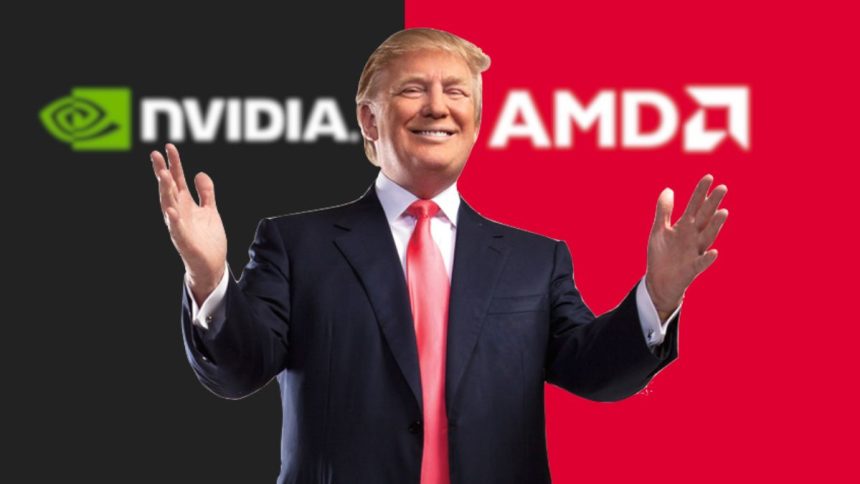The U.S. government has recently allowed NVIDIA and AMD to resume exporting certain advanced AI chips to China, reversing previous bans that were imposed due to national security concerns. However, this permission comes with a significant condition: both companies must pay 15% of the total profit earned from these chip sales in China back to the U.S. government. This is a unique and unprecedented financial arrangement, negotiated as part of special export licenses granted by the Trump administration.
Specifically, NVIDIA will share 15% of its revenue from sales of its H20 AI chip, while AMD will do the same for its MI308 chip, both high-end processors commonly used in artificial intelligence and supercomputing. NVIDIA had previously developed less powerful versions of its chips to comply with export restrictions, but the latest deal permits the sale of these advanced chips under strict terms.
The rationale behind this deal is to balance preserving U.S. national security interests and economic leadership, while enabling these tech giants to participate in the lucrative Chinese market. The deal effectively makes the U.S. government a financial beneficiary of sensitive technology exports to a geopolitical rival.
Despite official approval, some national security and former government officials have expressed strong objections, warning that exporting advanced AI chips to China could compromise the U.S.’s military and economic edge in artificial intelligence technology. Critics argue that receiving a cut of profits does not mitigate the security risks posed by providing China with cutting-edge AI hardware.
NVIDIA and AMD must maintain detailed sales records and report revenues regularly to the U.S. government, which plans to use the income for funding chip research, technology security, and enforcement of export controls.
This new chapter in U.S.-China tech trade reflects an unusual approach where export controls are linked directly to monetary payments, rather than being purely regulatory. The deal is seen by some as a pragmatic move to sustain America’s competitive position globally while managing geopolitical tensions.






